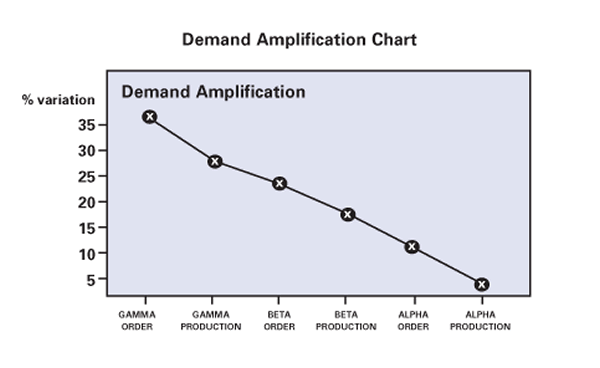Demand Amplification
The tendency in any multistage process for production orders received by each upstream process to be more erratic than actual production or sales at the next downstream process. This also is called the Forrester Effect (after Jay Forrester at MIT who first characterized this phenomenon mathematically in the 1950s) and the Bullwhip Effect.
The two main causes of demand amplification as orders move upstream are: (a) The number of decision points where orders can be adjusted; and (b) delays while orders wait to be processed and passed on (such as waiting for the weekly run of the Material Requirements Planning system). The longer the delays, the greater the amplification as more production is determined by forecasts (which become less accurate the longer the forecasting horizon) and as more adjustments are made to the orders (by system algorithms adding “just-in-case” amounts).
Lean thinkers strive to use leveled pull systems with frequent withdrawals for production and shipping instructions at each stage of the value stream in order to minimize demand amplification.
The demand amplification chart below shows a typical situation in which the variation in demand at the customer end of the value stream (Alpha) is modest, about +/-3% during a month. But as orders travel back up the value stream through Beta and Gamma they become very erratic until Gamma’s orders sent to its raw materials supplier vary by +/-35% during a month.
The demand amplification chart is an excellent way to raise consciousness about the degree of amplification present in a production system. If demand amplification could be completely eliminated, the variation in orders at every point along this value stream would be +/-3%, reflecting the true variation in customer demand.
